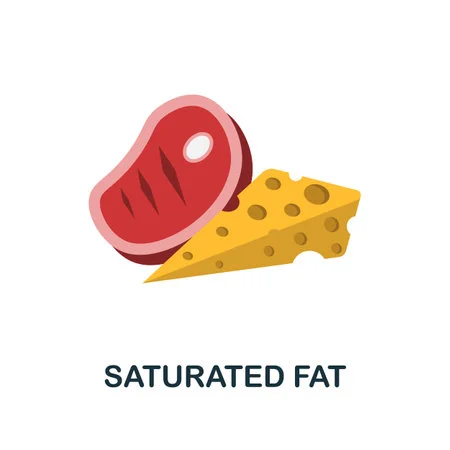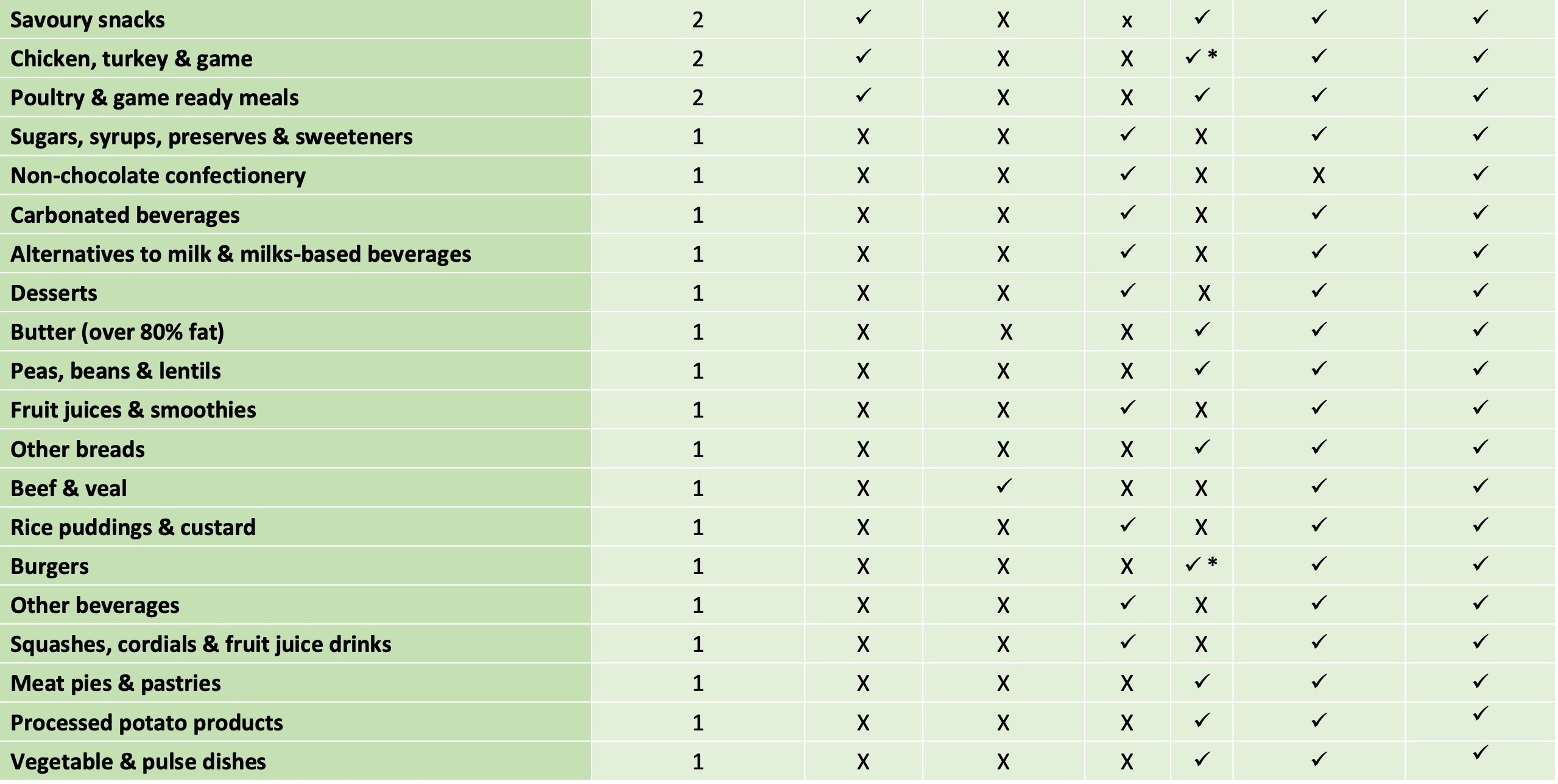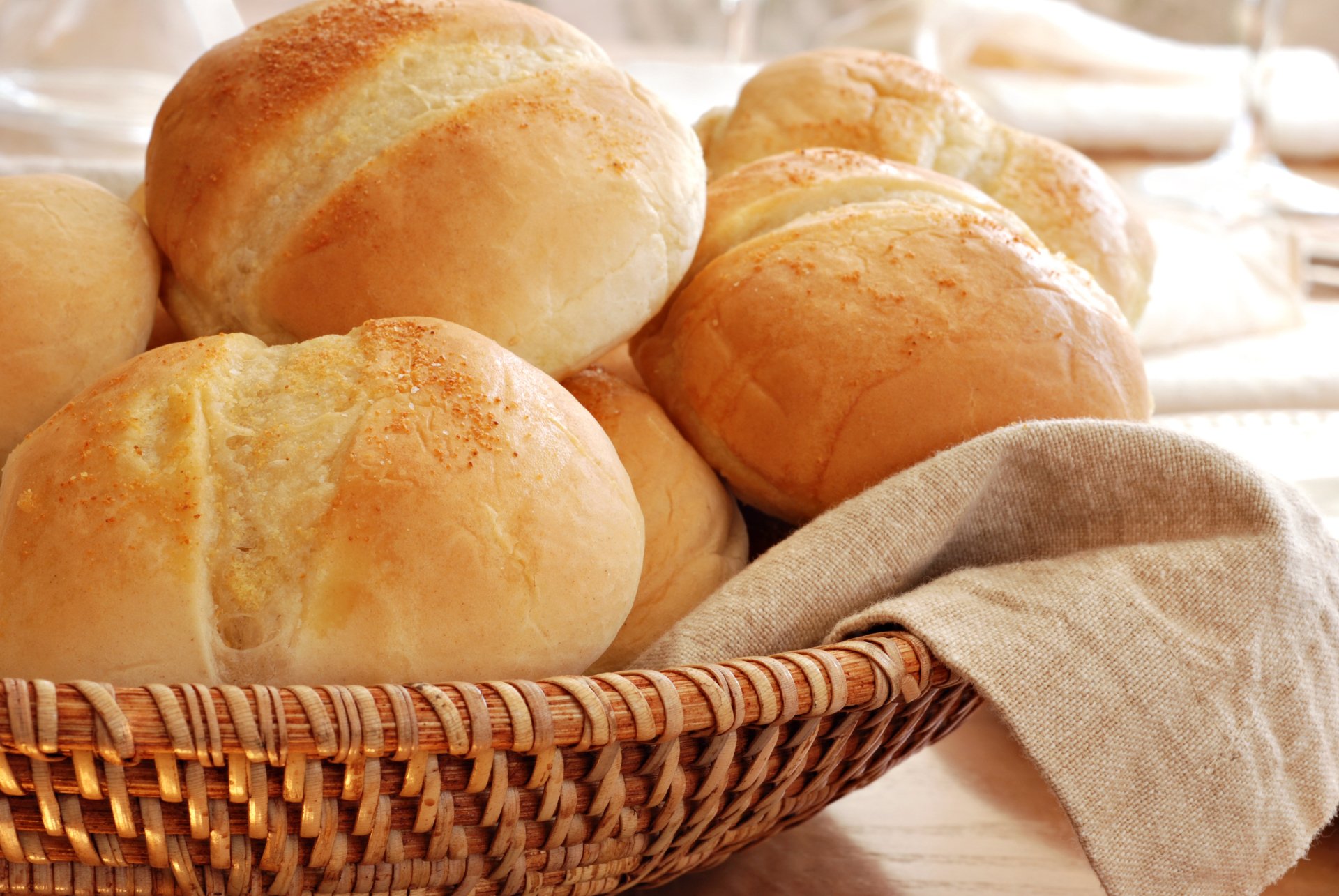Foods Navigation
Biscuits
Biscuits are a healthier alternative to a snack with a cup of tea or coffee when consumed in moderation. However, they have hidden calories in sugar, salt, bad fats, and refined wheat. They're also high in salt to extend shelf life and meet market demand.

Reducing Sugar: Use a sugar substitute or reduce the amount of sugar in the recipe.

Reducing Saturated Fat: Replace butter or shortening with a lower saturated fat option, like coconut oil or a plant-based butter.

Reducing Salt: Cut back on salt or use a salt substitute.

Reducing Calories: Replace some or all of the white flour with whole wheat flour.
Cupcakes
Cupcakes are high in sugar and saturated fat, two nutrients that should be consumed in moderation. Women should stay under 24 grams of added sugar per day, and men should aim for less than 36 grams per day. Added sugar is any sugar that's not found naturally in foods (like the natural sugar in fruit or milk).

Reducing Sugar: Use a sugar substitute, like Stevia or Erythritol, or reduce the amount of sugar.

Reducing Saturated Fat: Use unsweetened applesauce or mashed bananas as a substitute for some or all of the fat in the recipe.

Reducing Salt: Cut back on salt or use a salt substitute.

Reducing Calories: Replace white flour with whole wheat or almond flour.
Cookies
The health issue for homemade cookies is that they're generally made with refined white flour, butter, and sugar. That's the recipe for shortbread, and the basis for almost all cookies. None of those three ingredients provides any nutritional value.

Reducing Sugar: Use a sugar substitute or reduce the amount of sugar in the recipe.

Reducing Saturated Fat: Replace butter or shortening with a healthier fat option, like coconut oil or a plant-based butter.

Reducing Salt: Reduce salt or use a salt substitute.

Reducing Calories: Swap white flour for whole wheat, almond, or oat flour.
Croissants
Certain types of croissants are relatively high in calories, sodium, and saturated fat, which some people may need to limit. Some types may also contain trans fat, which can have harmful effects on health.

Reducing Sugar: Reduce the amount of sugar in the recipe or use a sugar substitute.

Reducing Saturated Fat: Choose fillings with lower saturated fat, sugar, and salt content.

Reducing Salt: Cut back on salt or use a salt substitute.

Reducing Calories: Replace some of the white flour with whole wheat flour.
Soup
Other types of soup you should watch out for are instant and canned soups, which are often loaded with sodium. High sodium intakes are associated with high blood pressure, a risk factor for heart and kidney disease.

Reducing Saturated Fat: Choose lean proteins, like chicken or turkey, instead of fattier cuts.

Reducing Salt: Opt for low-sodium or homemade broth. Use herbs and spices to add flavor instead of relying on salt.

Reducing Calories: Limit the use of high-calorie ingredients, like cream, butter, and oil.
Ketchup & Mustard
The high fructose corn syrup: The main ingredient in tomato ketchup is high fructose corn syrup which is extremely unhealthy and toxic. It is produced from corn that has been genetically modified.

Reducing Sugar: Purchase low-sugar and low-sodium versions or make your own at home. For homemade ketchup, use a sugar substitute or reduce the amount of sugar in the recipe. Use healthier sweeteners, like honey or maple syrup, in moderation.

Reducing Salt: For homemade mustard, use vinegar and spices for flavor instead of relying on salt.
Cheese
Cheese is a great source of protein and calcium but is often high in saturated fat and salt. This means eating too much could lead to high cholesterol and high blood pressure, increasing your risk of cardiovascular disease (CVD).

Reducing Saturated Fat: Choose low-fat or reduced-fat cheese options.

Reducing Salt: Opt for cheeses that are naturally lower in salt, like mozzarella or Swiss cheese.

Reducing Calories: Use smaller portions and enjoy cheese as a garnish rather than the main ingredient.
Yoghurts
Added sugar and processing can make some yogurt products unhealthy. Yogurt starts as fresh milk or cream. It is often first pasteurized, then fermented with various live bacteria cultures, and incubated at a specific temperature to encourage bacteria growth.

Reducing Sugar: Look for yoghurts with no added sugar. Opt for plain, unsweetened yoghurt and add your own fruit or a small amount of honey for natural sweetness.

Reducing Saturated Fat: Choose low-fat or fat-free yoghurt varieties.
Cereal
Breakfast cereals — "adult" ones included — can be full of added sugar, refined forms of sugar added to make foods taste better. They're different from the natural sugars found in fruit or dairy, which are accompanied by other important nutrients, such as fiber, protein or fat.

Reducing Sugar: Choose whole-grain cereals with minimal added sugars and fats. Avoid cereals with added sugars, such as those coated in honey or chocolate.

Reducing Calories: Look for cereals with a higher fiber content, which can help you feel fuller with fewer calories.
Pizza
Many types of pizza, particularly frozen and fast-food varieties, tend to be high in calories, fat and sodium. More processed varieties may contain unhealthy ingredients, such as colorings, added sugar and preservatives.

Reducing Saturated Fat: Use reduced-fat cheese or smaller amounts of full-fat cheese.

Reducing Salt: Limit the amount of salt added to the dough and sauce.

Reducing Calories: Choose vegetable toppings instead of high-calorie, fatty options like pepperoni or sausage.
Bread
The highly processed flour and additives in white, packaged bread can make it unhealthful. Consuming too much white bread can contribute to obesity, heart disease, and diabetes.

Reducing Sugar: Choose whole-grain bread with minimal added sugars and no high-fructose corn syrup.

Reducing Salt: Look for breads with lower sodium content or bake your own to control the salt content.

Reducing Calories: Opt for thinner slices or open-faced sandwiches to reduce overall calorie intake.
Chocolate
New research from Consumer Reports shows that dark chocolate contains cadmium and lead, two heavy metals that can lead to health problems. Experts say it's okay to eat dark chocolate this Valentine's Day if it's limited to a one-ounce serving. Choosing a brand with lower lead and cadmium is also recommended.

Reducing Sugar: Choose dark chocolate with a higher cocoa content (70% or more), which typically contains less sugar and fat than milk or white chocolate.

Reducing Saturated Fat: Choose dark chocolate with a higher cocoa content (70% or more), which typically contains less sugar and fat than milk or white chocolate.

Reducing Calories: Practice portion control by enjoying a small square or two, rather than a whole bar. Opt for chocolate with added nuts or dried fruit for added nutrition and a more satisfying snack.
Ready-made Meals
This is because they don't always provide your body with the nutrients it needs to stay healthy. Ready meals can be high in salt and fat and low in other nutrients. Eating foods high in calories may cause you to put on weight. And too much salt in your diet is linked to high blood pressure.

Reducing Calories: Cook your own meals at home whenever possible to have greater control over ingredients and portions.
Chips
Plain salted potato chips are “a low-nutrient, high-calorie food,” says Lindsay Malone, registered dietitian who works at the Cleveland Clinic. A typical 1.5-ounce bag will run you 223 calories, plus 14 grams of fat and 221 mg of sodium.

Reducing Sugar: Look for meals with lower calorie, sugar, and sodium content on the nutrition label.

Reducing Saturated Fat: Choose options with more vegetables and lean protein sources.

Reducing Salt: Look for meals with lower calorie, sugar, and sodium content on the nutrition label.
Crisps
This highly seductive high-intensity burst of fat, sugar and salt comes at a potential price to our health. Consumed in excess, these ingredients are well-proven by research to increase our risk of obesity, hypertension, type 2 diabetes and coronary disease.

Reducing Saturated Fat: Look for low-sodium or reduced-fat options.

Reducing Salt: Look for low-sodium or reduced-fat options.
Bacon
“About 68% of the calories from bacon come from fat—and about half of those are from saturated fat—so it's definitely not the healthiest meat you can choose.” Bacon and other smoked, cured and processed meats are usually treated with nitrates or nitrites—chemical added to preserve shelf life and enhance color.

Reducing Saturated Fat: Cook bacon using a method that allows excess fat to drain off, such as on a wire rack in the oven.

Reducing Salt: Opt for reduced-sodium varieties or try turkey bacon as an alternative.
Ham
Ham and other processed meats are very high in salt and associated with an increased risk of certain cancers.

Reducing Saturated Fat: Opt for reduced-sodium, lean ham cuts or low-fat deli ham.

Reducing Salt: Look for uncured, nitrate-free options to avoid added preservatives. Opt for reduced-sodium, lean ham cuts or low-fat deli ham.
Chicken
This Food explains ***

Reducing Saturated Fat: Remove the skin before cooking to reduce calories and fat content.

Reducing Salt: Limit the use of salt and opt for sodium-free seasonings, herbs, and spices for flavor.
Sausage
All red meat also contains a red pigment called haems, which, once in the gut, can be broken down to form N-nitroso compounds, or NOCs, many of which are known to cause cancer.

Reducing Saturated Fat: Cook sausages using methods that allow excess fat to drain, like grilling or broiling. Choose chicken or turkey sausage, which tend to be lower in saturated fat.

Reducing Salt: Opt for reduced-sodium varieties or make your own sausages at home to control salt content.
Ice cream
Most ice cream is high in calories and added sugar while low in nutrients. Although low-fat and no-sugar-added choices are commonly marketed as healthier, they're still calorie-dense and may contain various sweeteners.

Reducing Sugar: Look for ice cream with reduced sugar or no added sugar.

Reducing Calories: Practice portion control and enjoy smaller servings.
Fish
This Food explains ***

Reducing Salt: Limit the use of salt and opt for other seasonings, herbs, and spices for flavor. When consuming processed fish products, look for low-sodium options.

Reducing Calories: Opt for leaner fish varieties like cod, flounder, or tilapia to reduce calorie content.
Butter
Scientists around the world simultaneously showed that saturated fat—the kind in butter and lard—increases both “bad” LDL cholesterol and “good” HDL cholesterol, making it similar to carbohydrates overall but not as beneficial to health as polyunsaturated fats from nuts and vegetables.

Reducing Salt: Use other salt-free spreads, like avocado or hummus, in place of butter when possible. Opt for unsalted butter or a low-sodium butter alternative.
Pudding
A half cup of ready-to-eat, packaged pudding contains 100 calories, 17 grams sugar and 1 gram fat.

Reducing Sugar: Choose sugar-free or reduced-sugar pudding options. Make your own pudding at home using a sugar substitute, like Stevia or Erythritol, or reduce the amount of sugar in the recipe.
Burger
Science says that junk foods are full of calories, fat and excess sodium and having it even once can be bad for your health. For example, a single hamburger contains 500 calories, 25 grams of fat, 40 grams of carbs, 10 grams of sugar, and 1,000 milligrams of sodium, which is enough to cause havoc in your system.

Reducing Salt: Use low-sodium condiments and toppings. Choose leaner meats, like ground turkey or chicken, which can have a lower sodium content. Season the burger patty with herbs, spices, or sodium-free seasonings instead of salt.
Lollipop
Eat enough lollipops, and you'll significantly increase your risk of cavities, gum disease, and other oral health problems. Try to minimize eating lollipops and brush your teeth after having them to help prevent cavities, gum disease, and other oral health problems.

Reducing Sugar: Look for sugar-free lollipops made with sugar substitutes, like xylitol or erythritol. Limit consumption and choose healthier alternatives, like fresh fruit, for a sweet treat.
Jam
Jam is loaded with sugars and transfats.

Reducing Sugar: Choose sugar-free or reduced-sugar jam options. Opt for fruit spreads with no added sugar, sweetened only by the natural sugar in the fruit.
Beans/Peas
This Food explains ***

Reducing Salt: Rinse canned beans or peas under running water to remove some of the excess salt. Opt for low-sodium canned beans or peas. Cook dried beans or peas at home to control the salt content.
Sweets
Eating too much sugar can contribute to people having too many calories, which can lead to weight gain. Being overweight increases your risk of health problems such as heart disease, some cancers and type 2 diabetes.

Reducing Sugar: Choose sugar-free or reduced-sugar sweets made with sugar substitutes, like xylitol or erythritol. Practice portion control and consume sweets in moderation. Opt for healthier snack alternatives, like fresh fruit, nuts, or yogurt.
Chocolate milk
Chocolate milk contains added sugars and therefore more calories that can lead to more overweight and obesity. In the United States, 1/3 of children are already overweight and obese and at higher risk for chronic diseases such as type 2 diabetes, heart disease and cancer.

Reducing Sugar: Choose sugar-free or reduced-sugar chocolate milk options. Make your own chocolate milk at home with unsweetened cocoa powder and a sugar substitute or a small amount of natural sweetener, like honey or maple syrup. Opt for non-dairy milk alternatives, like almond or soy milk, which may have less sugar.
Fruit juice
Too much sugar of any kind isn't healthy. Fruit juices often have added flavors, food coloring or other additives. In addition, news came out in January that many fruit juices can contain lead or other metals, according to Consumer Reports.

Reducing Sugar: Choose 100% fruit juice with no added sugars. Dilute fruit juice with water or sparkling water to reduce the sugar content. Opt for fresh, whole fruit instead of juice for a more nutritious option with less sugar.
Soft drinks
Soda is not good for a person's health because it contains lots of sugar. Consuming too much soda may lead to weight gain, diabetes, and cardiovascular conditions. According to the Centers for Disease Control and Prevention (CDC) , most people in America consume too many added sugars, which can lead to health problems.

Reducing Sugar: Choose sugar-free or reduced-sugar soft drink options, like diet sodas or flavored sparkling water. Dilute soft drinks with water or sparkling water to reduce the sugar content. Opt for healthier beverage alternatives, like herbal tea, water infused with fruit, or plain water.




































